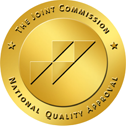The United States has been facing an opioid epidemic ever since the 1990s. Bigger cities, such as Los Angeles, have dealt with its fair share of the drug crisis. Many individuals may struggle with opioid addiction because they falsely think that these drugs are safer due to being prescribed by doctors. However, opioids are incredibly addictive and can wreak havoc on a person’s life if an addiction is formed. Understanding opioid addiction and its treatments can give hope to those currently struggling.
What Are Opioids?
Opioids “are a class of drugs that include the illegal drug heroin, synthetic opioids such as fentanyl, and pain relievers available legally by prescription such as oxycodone, hydrocodone, codeine, morphine and many others.” These drugs are made to chemically interact with the brain’s opioid receptors to help with pain relief. However, they are highly addictive and often used to achieve a sense of euphoria in more significant quantities. Dependence can develop over time, with many individuals eventually developing an addiction, resulting in overdose and even death.
Signs and Symptoms of Opioid Abuse
Opioid addiction often occurs when the drugs are not being taken according to a doctor’s instructions and instead are used to get high. Individuals who develop an addiction to opioids have a hard time stopping consumption because their brains become dependent on its presence in their system. Various symptoms occur when an individual struggles with opioid addiction that can point to their needing help. If you or someone you know may be struggling with opioid abuse, look out for the following symptoms:
- Inability to stop, even if desired
- Intense cravings
- Flu-like symptoms
- Lack of hygiene
- Isolation from friends and family
- Drowsiness
- Sudden weight loss
- Mood changes
Long-Term Effects on the Body
Because opioids interact with your brain’s opioid receptors, your brain becomes accustomed to the large surges of dopamine created by the drug. Therefore, it will often lessen its dopamine production and rely on opioids to supply it. This process can be dangerous and lead to addiction; it reinforces your brain to continue using the drug because it associates it with pleasure. You can also have severe withdrawal symptoms, especially if you have been taking the drugs for an extended period.
Withdrawal Symptoms
Going through the detoxification (detox) process is crucial to the recovery process. When a person is exposed to any type of substance regularly, the drug throws off the body’s sense of balance or homeostasis. When the person stops using the drug, the state of homeostasis in the body developed as a result of regularly getting the drug is suddenly thrown off. This results in a state of imbalance that includes several issues with levels of hormones, neurotransmitters, and imbalances in other systems that result in what most people think of as withdrawal symptoms. Detox helps individuals safely manage withdrawal symptoms.
The withdrawal process can last anywhere from 72 hours to one week, depending on the person’s physical state, how long they have been using opioids and their addiction severity.
Early Withdrawal Symptoms
- Anxiety
- Sweating
- Insomnia
- Agitation
- Lethargy
- Muscle aches and pains
- Tearing
- Runny nose
- Restlessness
- Intense cravings
- Excessive yawning
Later Withdrawal Symptoms
- Rapid heart rate
- High blood pressure
- Nausea and vomiting
- Dilated pupils
- Goosebumps
- Diarrhea
- Abdominal cramps
It is important to note that behavioral and emotional withdrawal symptoms can last for an extended time. However, the physical symptoms of withdrawal generally last from 72 hours to one week after last use.
Treatment for Opioid Abuse
Opioid addiction is usually treated by starting with medical detox. Detox involves being routinely monitored around the clock as you experience withdrawal symptoms after ceasing substance use. Once you have detoxed completely, you can move into either co-occurring treatment, residential treatment or an intensive outpatient program, depending on your recovery needs. During these programs, you will be undergoing various therapies to help you cope with the emotional and mental effects of addiction and the causes that drove you to abuse opioids. You may also be treated with medication in addition to your ongoing counseling.
Common medications used to treat opioid withdrawal symptoms include:
- Methadone (used in long-term maintenance for opioid dependence)
- Buprenorphine (shortens the length of detox and can be used for long-term maintenance)
- Clonidine (reduces specific withdrawal symptoms excluding cravings)
- Naltrexone (helps to prevent relapse)
Depending on the facility, you may also get aftercare help. Aftercare will help you learn how to continue recovery even after you leave treatment. You can be connected with local support groups, given relapse prevention training and more. This way, you can be sure that you are set up for success in recovery and have the proper tools to maintain it for years to come.
Opioid addiction is a significant problem in the United States, especially in bigger cities like Los Angeles. Luckily, there are treatment centers such as Casa Palmera located in Los Angeles that can help individuals get back on their feet and heal from opioid addiction. The process will take time, and it will not be easy, but it is worth it. Casa Palmera offers many programs to help you or your loved one recover from an addiction, such as individual, group and family therapy. There is also a medical detox program and a medical doctor, licensed psychiatrist and substance abuse counselor on staff. Our facility offers the advanced clinical techniques necessary for treating both addiction and its co-occurring disorders with an emphasis on evidence-based drug and alcohol treatment methods as well as the 12-step philosophy. With Casa Palmera, you know you are in safe hands. Let our experts help you recover from opioid addiction and find a new life for yourself. Contact us anytime or visit us online. The road to recovery begins with Casa Palmera.




